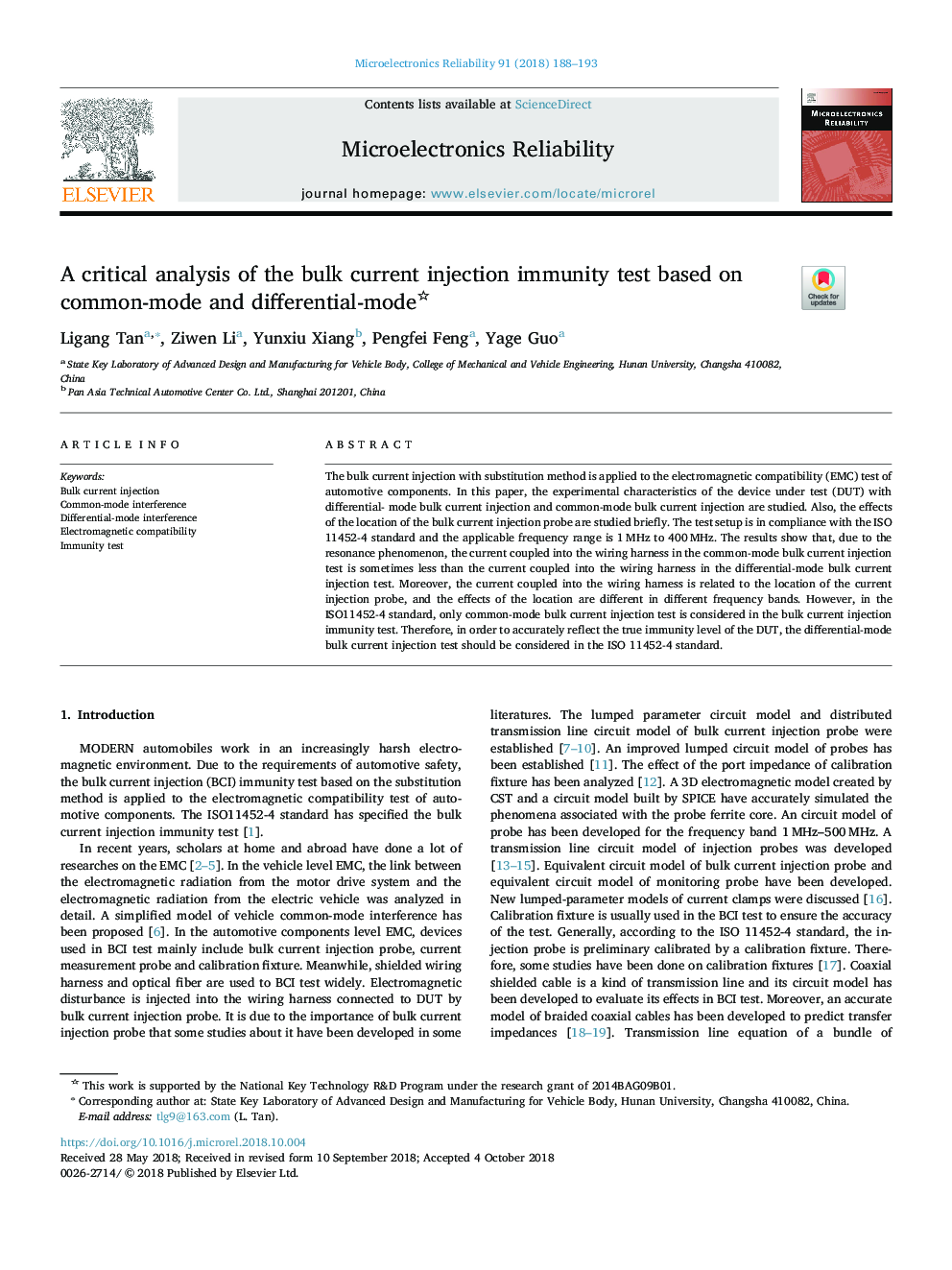| Article ID | Journal | Published Year | Pages | File Type |
|---|---|---|---|---|
| 11263006 | Microelectronics Reliability | 2018 | 6 Pages |
Abstract
The bulk current injection with substitution method is applied to the electromagnetic compatibility (EMC) test of automotive components. In this paper, the experimental characteristics of the device under test (DUT) with differential- mode bulk current injection and common-mode bulk current injection are studied. Also, the effects of the location of the bulk current injection probe are studied briefly. The test setup is in compliance with the ISO 11452-4 standard and the applicable frequency range is 1â¯MHz to 400â¯MHz. The results show that, due to the resonance phenomenon, the current coupled into the wiring harness in the common-mode bulk current injection test is sometimes less than the current coupled into the wiring harness in the differential-mode bulk current injection test. Moreover, the current coupled into the wiring harness is related to the location of the current injection probe, and the effects of the location are different in different frequency bands. However, in the ISO11452-4 standard, only common-mode bulk current injection test is considered in the bulk current injection immunity test. Therefore, in order to accurately reflect the true immunity level of the DUT, the differential-mode bulk current injection test should be considered in the ISO 11452-4 standard.
Keywords
Related Topics
Physical Sciences and Engineering
Computer Science
Hardware and Architecture
Authors
Ligang Tan, Ziwen Li, Yunxiu Xiang, Pengfei Feng, Yage Guo,
